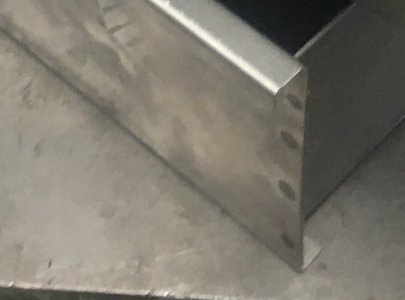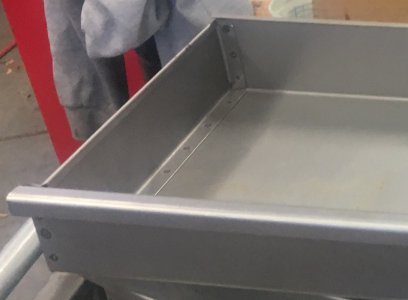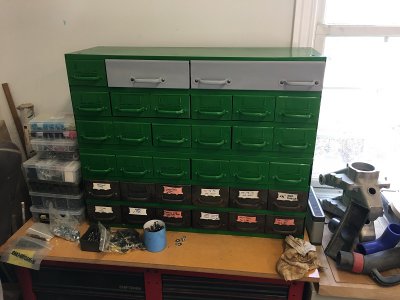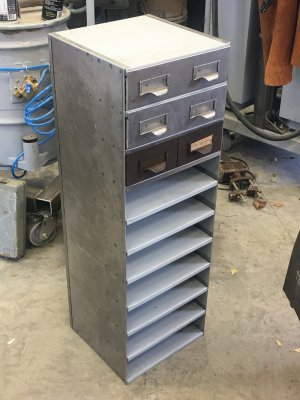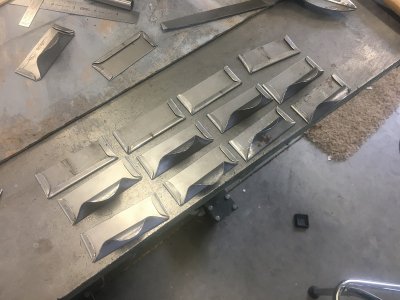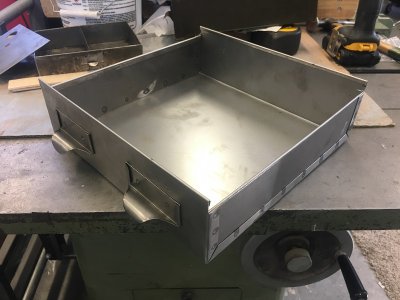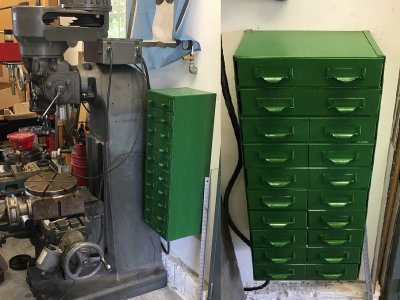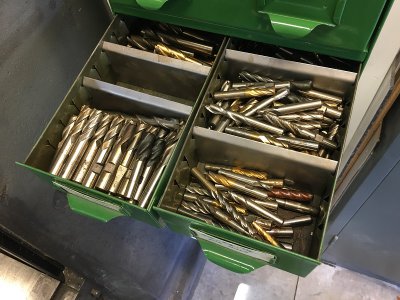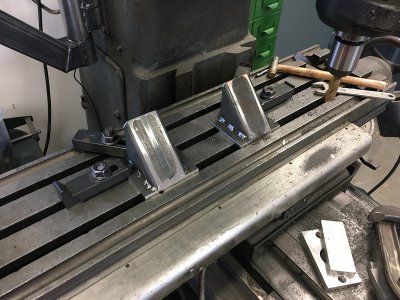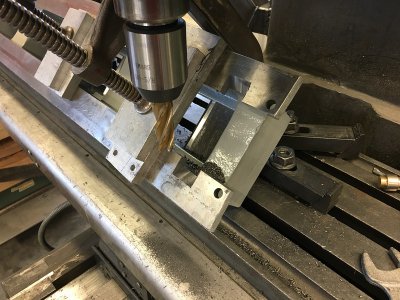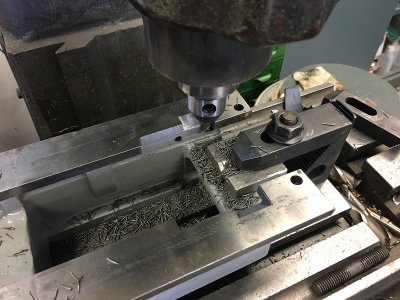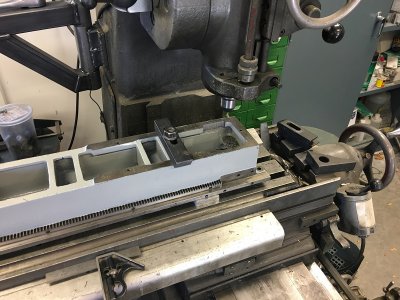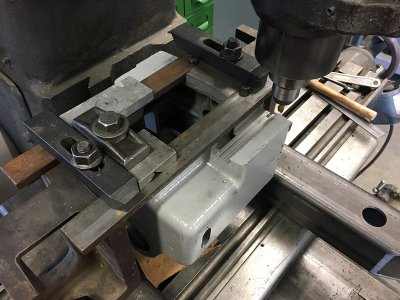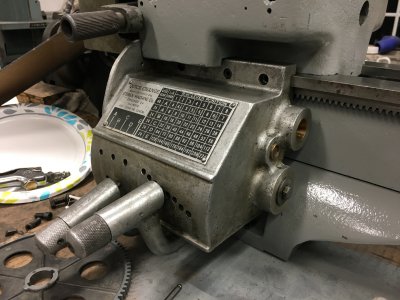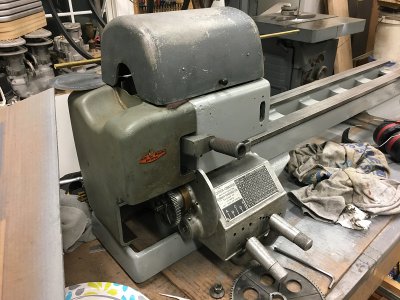Well, I'm back at it. I commented earlier about building a stand and a possible under drive countershaft conversion. I located the parts to do the conversion and a complete Craftsman lathe cabinet with drive assembly for a reasonable price, so off I go. It was my Grandfathers, Father’s, and Brothers lathe; time to make it my lathe.
Here’s the cabinet as I got it. Turns out, a variant of the Craftsman lathes were modified and sold into the printing industry in some numbers, which are long since obsolete now so there are some cabinets available in salvage. After a fair drive to retrieve it, here’s how it looked when I got it home, after a drive through the car wash to remove the majority of the grunge. Fairly solid and complete…..
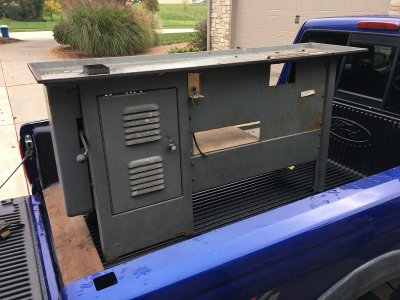
…..but the cabinet was for a 54” bed lathe and mine is 42”.
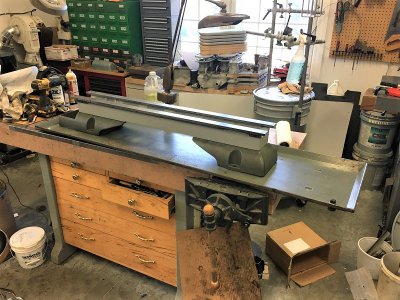
So I sectioned and reduced the length of the chip pan …..and cut a foot out of the shelf.
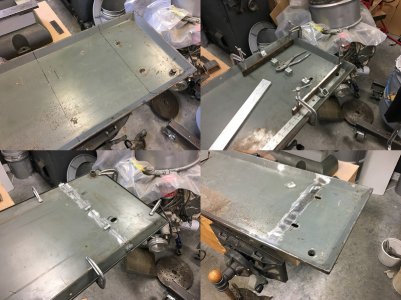
The left pedestal and right upright are 3/16” formed steel and fairly stout. The shelf is formed 16 gauge and only the chip pan on top which was also 16 gauge. To stiffen things up a bit I made and this brace from 1/8” stock and angle that bolts in between them and it really makes a big difference in overall rigidity.
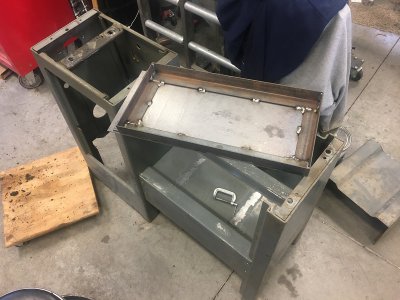
When reassembled it looked like this and was the correct length for my lathe.
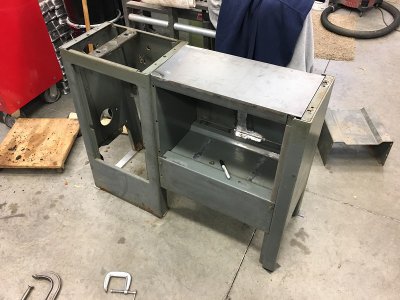
I have lots of tooling and always need storage space. I also have some sheet metal equipment so I decided to make a set of drawers for the cabinet.
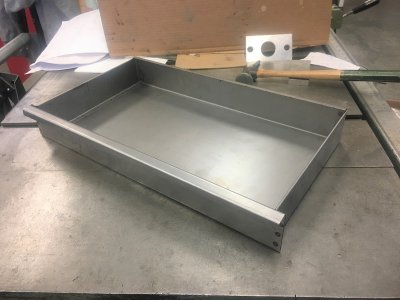
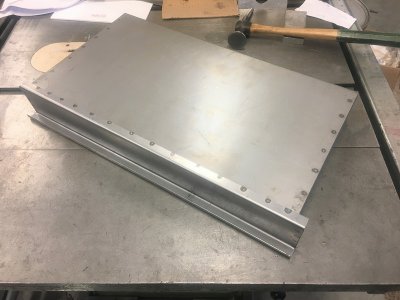
The middle four drawers are 20 gauge and slides rated for 100lbs while the bottom drawer is 18 gauge with 500lb slides. The 12” section of chip pan and shelf I removed are in the foreground.
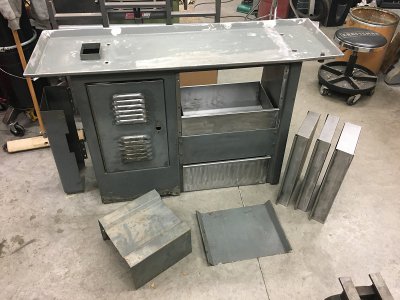
So at this point all the fab on the cabinet was done, it was disassembled, prepped, painted, and reassembled. I had welded some nuts on the cabinet base for leveling feet……could re-decide that for anchors later, but I doubt it.
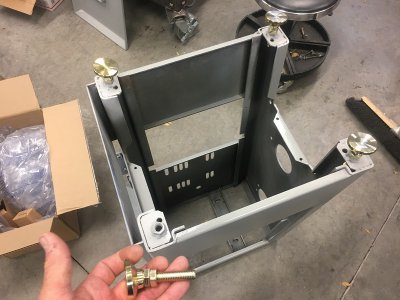
Ready for the lathe which is completely disassembled, painted and waiting for reassembly……….more to come.
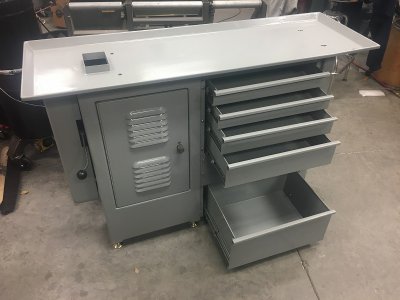
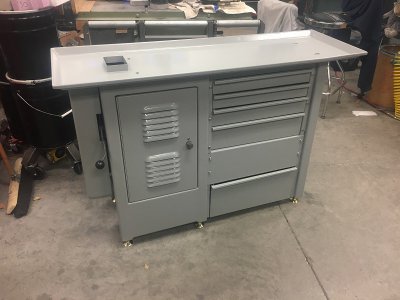
Best,
Kelly
Here’s the cabinet as I got it. Turns out, a variant of the Craftsman lathes were modified and sold into the printing industry in some numbers, which are long since obsolete now so there are some cabinets available in salvage. After a fair drive to retrieve it, here’s how it looked when I got it home, after a drive through the car wash to remove the majority of the grunge. Fairly solid and complete…..

…..but the cabinet was for a 54” bed lathe and mine is 42”.

So I sectioned and reduced the length of the chip pan …..and cut a foot out of the shelf.

The left pedestal and right upright are 3/16” formed steel and fairly stout. The shelf is formed 16 gauge and only the chip pan on top which was also 16 gauge. To stiffen things up a bit I made and this brace from 1/8” stock and angle that bolts in between them and it really makes a big difference in overall rigidity.

When reassembled it looked like this and was the correct length for my lathe.

I have lots of tooling and always need storage space. I also have some sheet metal equipment so I decided to make a set of drawers for the cabinet.


The middle four drawers are 20 gauge and slides rated for 100lbs while the bottom drawer is 18 gauge with 500lb slides. The 12” section of chip pan and shelf I removed are in the foreground.

So at this point all the fab on the cabinet was done, it was disassembled, prepped, painted, and reassembled. I had welded some nuts on the cabinet base for leveling feet……could re-decide that for anchors later, but I doubt it.

Ready for the lathe which is completely disassembled, painted and waiting for reassembly……….more to come.


Best,
Kelly
Last edited:

